I made about 8 million, with a principal of 50,000. I have never worked since graduating from university.
I have been playing in Fujian and Hainan, and I don't buy houses or cars. I spend 1500 a month.
Why enter the circle:
If you want to change your destiny, you must try the crypto circle. If you can't get rich in this circle, ordinary people will have no chance in this life.
Execute coin speculation like this! Earning one million is achievable.
1. Do two months of hard labor to increase the principal to around 10,000.
2. Buy coins when the Bitcoin weekly line is above ma20, buy two or three, it must be a new coin, a hot coin in the bear market, such as apt before it rose, it came out of the bear market, as long as Bitcoin rises a little, it will take off, such as op. Anyway, remember to have popularity and a story to tell.
3. Stop loss if Bitcoin falls below ma20, continue to earn money during the purchase or waiting period, and give yourself two to three chances to fail. If you have a deposit of 20,000, invest 10,000, you can fail three times.
4. If you buy a coin like apt, sell it after getting about 4-5 times the return. Continuously execute the strategy. Remember that you are small capital and you must buy new coins. Don't buy ETH or BTC. Their gains cannot support your dream.
5. If the bear market starts until the bull market, get three 5x returns, which is about 125x. This time is about one year in the short term and 3 years in the long term. You have three chances to fail. If you fail all three times, it means you don't have the ability, stay away from this circle, stay away from investment, and don't get caught up in contracts. In short, remember to enter the market when you should enter, and stop loss when you should stop loss. Be patient.
6. Making trades has its ups and downs, it is normal. Don't be affected by temporary profits or losses. With a calm mind, you can see everything clearly!
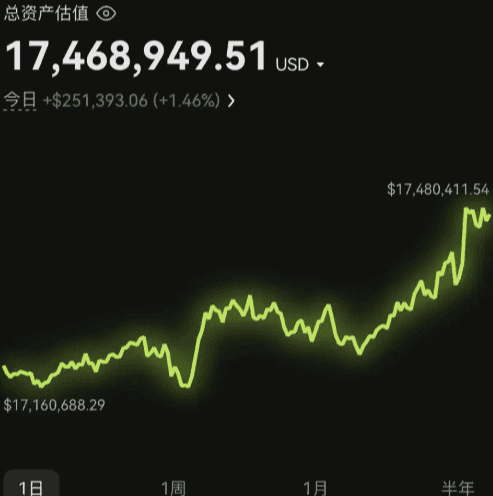
It took nearly 10 years for my personal account to go from 300,000 to 1 million, but after reaching 1 million, it seemed like I had an epiphany and went straight to 40 million. I have summarized 12 iron rules, which are very short but very real. If you plan to play in the crypto market for a long time, then this article is worth reading carefully. After reading it, you will also have an epiphany!
1. When speculating in coins, only do strong coins, and only look at coins in an upward trend. Do not look at coins in a downward trend, because we do not have time to spend time with the main force. If the coin is always in the trend line + above, then hold it patiently. For example, artificial intelligence at the beginning of the year, as long as it does not fall below the 30-day moving average*, hold it and exit when it falls below.
2. Look at the main trend + when the market trend is good, there will definitely be a main direction. If this main trend is weak, or there is no main trend at all, it means that the recent market risk is greater than the opportunity, and you should patiently wait for the emergence of the main trend and do not operate blindly.
3. Don't put all your eggs in one basket, the same is true for coin speculation, don't put all your positions in one coin, even if you are very optimistic about it, you must learn to split your positions, and don't have more than 4 coins in your hand.
4. Don't always think about buying and selling coins, you feel uncomfortable if you don't operate for a day. Frequent operation can bring pleasure, but it will lose a lot of money. The only beneficiary is the brokerage, you don't have the level of short-term frequency, and you are not a dealer*.
5. Take a break after a big loss, and even more so after a big win. From a psychological perspective, a big loss will affect your mindset. It's difficult to be objective when you're flesh and blood. At this time, you need to understand your own retaliatory trading psychology. The gambler's mentality of trying to win back the loss or make a big profit in one go is not advisable. After a big win, your emotions reach a high point, and it's easy to lose your cautiousness. Therefore, big wins are often followed by big losses.
6. Operate with fractional positions, do not buy a coin with heavy positions at one time, even if you are very optimistic about it, you should not do this even if it proves that you are right later, because no one knows what will happen tomorrow!
7. Small time-sharing lines, many retail investors always look at the time-sharing lines all day long when staring at the market. In fact, this is not only not beneficial, but will also disrupt your trading mentality. Coin speculation also requires a combination of work and rest. It is actually enough to spend more than an hour reviewing the market every day.
8. Think more and summarize each transaction, bravely face your account and delivery note, probability will tell you what to do in the future.
If you can't overcome psychological barriers, no amount of failure can be transformed into experience.
Share another set of my own practical strategies for many years. My coin speculation method is very simple and practical. I only use one year to speculate to 8 figures. I only enter the market when I am sure of the opportunity. I don't make orders without a shape. I have maintained a win rate of over 90% for five years!
I have compiled the essence of [RSI Swing Trading], "14 charts to teach you the ultimate mental method of RSI swing trading". As long as you master it well, relying on this method to speculate in coins, the account is guaranteed to increase 30 times. Today, I specially compiled the dry goods and shared them with destined people, please collect them carefully.
There is no doubt that the Relative Strength Index (RSI) is probably one of the most commonly used technical indicators by traders worldwide. It is a momentum oscillator developed by J. Welles Wilder, a well-known Wall Street trader, to capture the speed and change of price movements.
To this end, it is expressed as a value from 0 to 100, where a value below 30 is considered 'oversold' and a value above 70 is considered 'overbought'. In this way, the indicator can draw attention to potential turning points in the current trend, which may lead to a correction of the existing long-term trend, or even trigger a real trend change.
RSI Calculation Formula
RSI is usually calculated using the following formula:
RSI = 100 - [100 / (1 + RS)]
Where RS (Relative Strength) is the average of the closing prices up days divided by the average of the closing prices down days in x days. The most common period is 14 days, but traders can adjust this value according to their preferences and trading style.
RSI Levels
Between 0 and 30: Extremely oversold
A value below 30 indicates that the market is in a severely oversold state. Traders will pay attention to possible changes in price trends, that is, the existing downward trend may turn into a new upward trend.
However, this is not absolute. Always remember that a downward trend with strong momentum may cause the indicator to remain in an extremely oversold area for a long time. Therefore, blindly buying simply because the value is below 30 is not a good strategy.
Between 30 and 50: Slightly oversold to neutral
Values above but close to 30 indicate that the market is in a slightly oversold state. If the value is closer to 50, it is more likely to be in a neutral state.
Between 50 and 70: Neutral to slightly overbought
Values above but close to 50 are also neutral. However, if the value is close to the 70 level, it indicates that the market is in a slightly overbought state.
Between 70 and 100: Extremely overbought
This area is considered an extremely overbought area, and the market believes that the upward trend may lose momentum, and there may be a real trend reversal, turning into a downward trend.
Nevertheless, the same observations as for oversold situations also apply here. A strong upward trend may attract more buyers into the market, causing the Relative Strength Index to soar rapidly. This does not mean that the market cannot continue to rise strongly indefinitely.
Again, you should not automatically close long positions (or open short positions) simply because the indicator is in an extremely overbought state.
"Please keep in mind that these ranges are only indicative and should never be used as pure trading signals. Without additional elements to confirm overbought or oversold situations, the probability of false signals is very high."
Which settings to use?
The best parameter selection for this indicator depends entirely on personal preference, mainly depending on the strategy you are using and the time frame in which it is executed.
The default setting is 14 periods, with an upper limit of 80 and a lower limit of 30. Typical swing traders sometimes use 20 periods, because this roughly corresponds to a 1-month trading cycle on the daily chart.
Another option is to set the upper and lower limits to 80 and 20, respectively, slightly tightening the range. This will result in fewer signals, but the signals will become more reliable and reduce the occurrence of false signals.
Overbought and Oversold Levels
The horizontal axis represents time, and the values on the vertical axis range from 0 to 100 (which is why the indicator is called an oscillator).
◎ Above 50: The technical trend is positive.
◎ Below 50: The technical trend is negative.
It measures the speed and direction of price movements.
The general rule is:
◎ When the value is above 70, it is called an 'overbought' signal, which means that the price has risen sharply in a relatively short period of time, and the possibility of a (temporary) decline increases.
◎ When the value is below 30, it is called an 'oversold' signal, which means that the price has fallen sharply, and the possibility of a (temporary) rebound increases.
Visually, the indicator looks like this, you can identify peaks above 70 and valleys below 30:
The following shows the RSI, taking the stock price chart of energy company Cenovus Energy as an example:
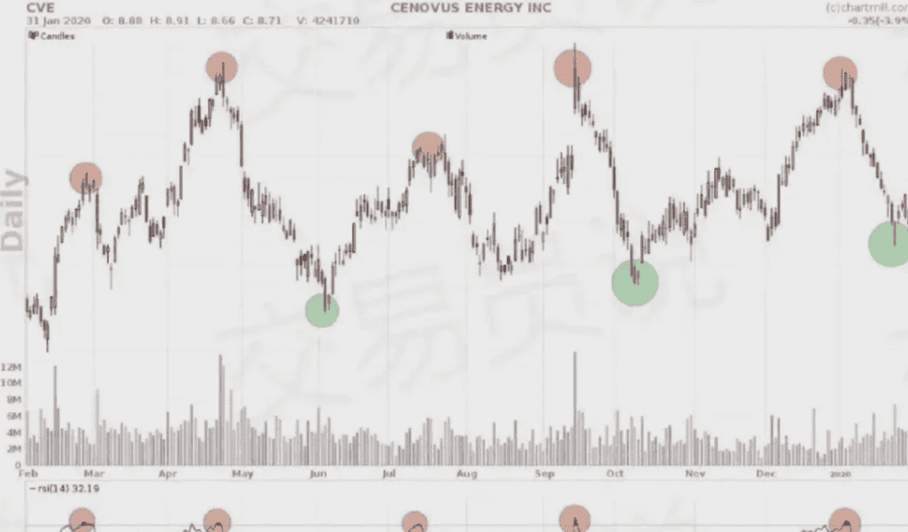
The red circles in the figure indicate sell signals, and the green circles indicate potential buy signals. Any trader who bought at the green circles and sold at the red circles made a very considerable profit!
The chart shows that RSI levels mainly provide good signals in sideways markets.
3 Different Ways to Use These Levels in Trading Strategies
We emphasize that the reliability of the RSI indicator is highly dependent on the market stage of the stock or market.
We distinguish between the following stages:
◎ The price is in a sideways channel (consolidation area).
◎ The price shows a clear upward trend.
◎ The price shows a clear downward trend.
1. Sideways Price Channel
In a sideways price channel, we have seen that classic buy and sell signals (buy at <30 and sell at >70) are relatively reliable.
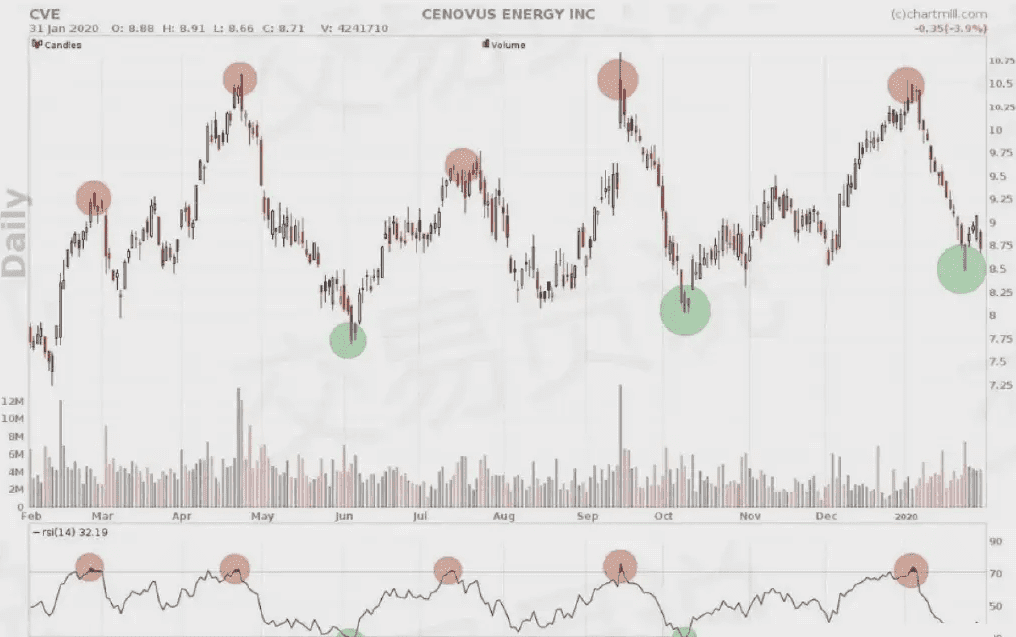
The stock price fluctuates roughly in a wide sideways channel between $10.75 and $7.50. The price falls or rises each time one of the two boundaries is reached. In this case, the RSI shows accurate signals.
2. Upward Trend
In prices with a clear upward trend, the classic usage is much less effective. The strong upward trend in the figure below is clear at a glance.
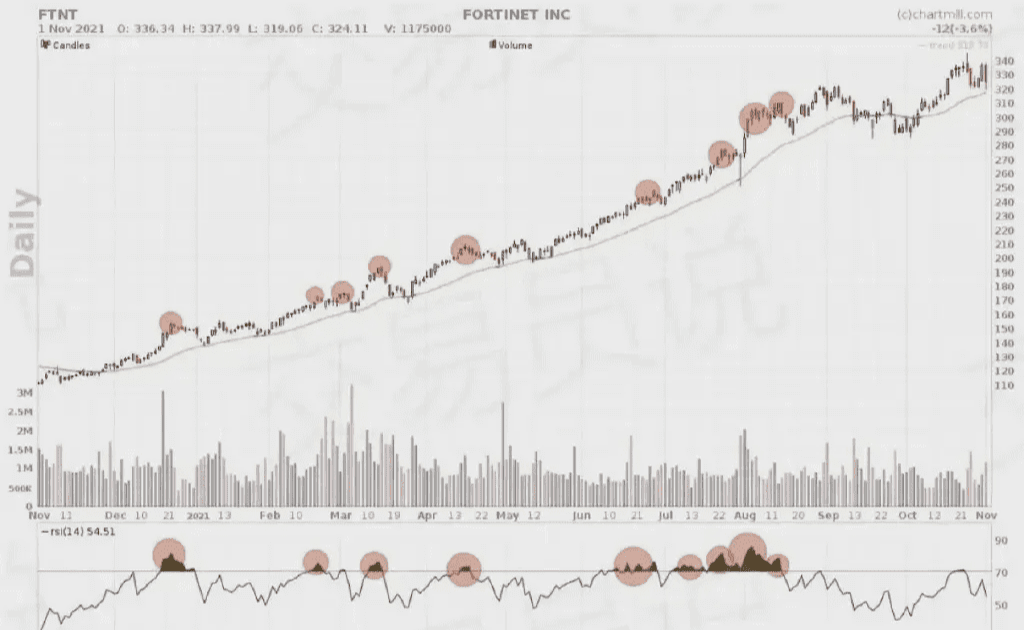
As long as the trend continues to rise, it is recommended to ignore sell signals. In this case, you can try to buy on temporary dips in the upward trend.
Of course, you can also use the RSI indicator to achieve this goal. In the figure below, we show the same chart, but ignore the sell signals and mark the moments when the RSI value falls below the 50 level.
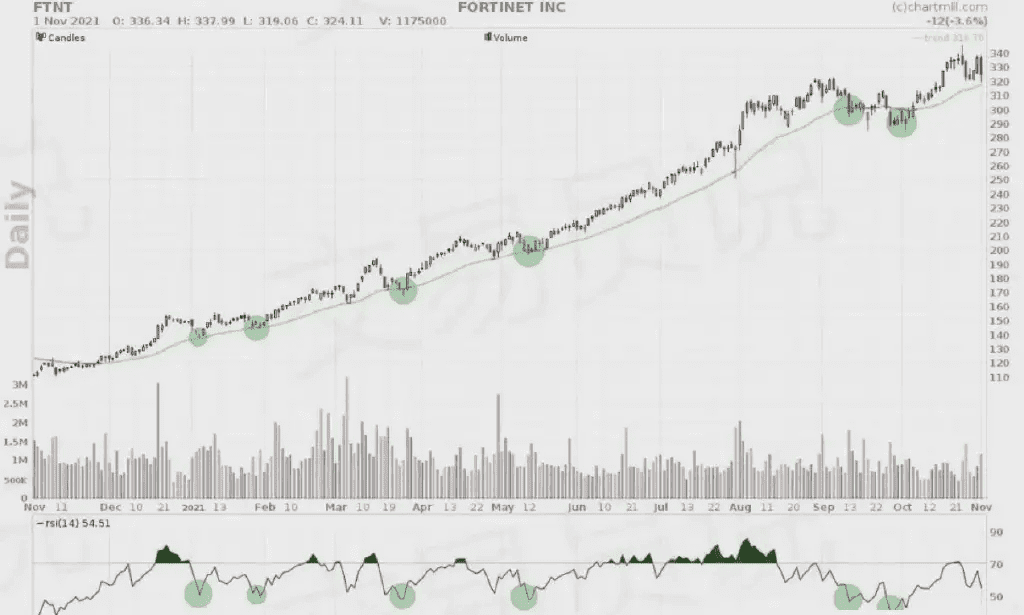
In an upward trend, buying when the RSI falls below 50 usually yields very good results and allows you to increase your position in the same stock (or other variety).
3. Downward Trend
Similar to an upward trend, in a sharply declining trend, RSI can also be used to short sell if the price temporarily rebounds. In the figure below, we have marked the points where the trend indicator shows a downward trend (red line), and the occasional price rebounds, at which time the trend indicator turns neutral (gray) but never turns positive (green).
At these times, when the RSI value exceeds 50, the indicator shows a sell signal.
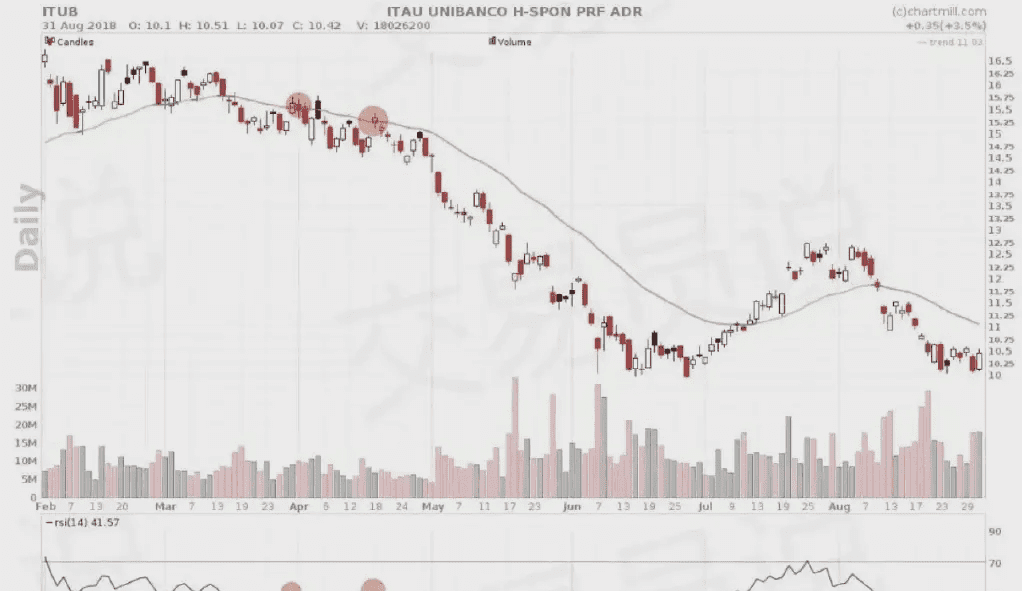
"In stocks that show a strong price trend (upward or downward), the classic lower and upper limits (30 and 70) are too extreme in many cases. In this case, the 50 level is more suitable for identifying overbought or oversold periods."
The Power of Divergence: Discovering New Price Trends Early
Divergence means that there is a difference between the price evolution on the chart and the movement of the indicator.
Because this divergence usually occurs when an existing long-term trend is about to end, active investors use them to identify early changes in long-term price trends, thereby opening new positions in the direction of the reversing trend.
Divergence is divided into bullish (positive) divergence and bearish (negative) divergence.
Bullish RSI Divergence
A bullish divergence occurs when the price chart still shows lower bottoms, while the RSI chart line shows the opposite movement. This is a signal that the strength and momentum of the falling price movement is weakening (at least temporarily), thereby increasing the possibility of a temporary price rebound.
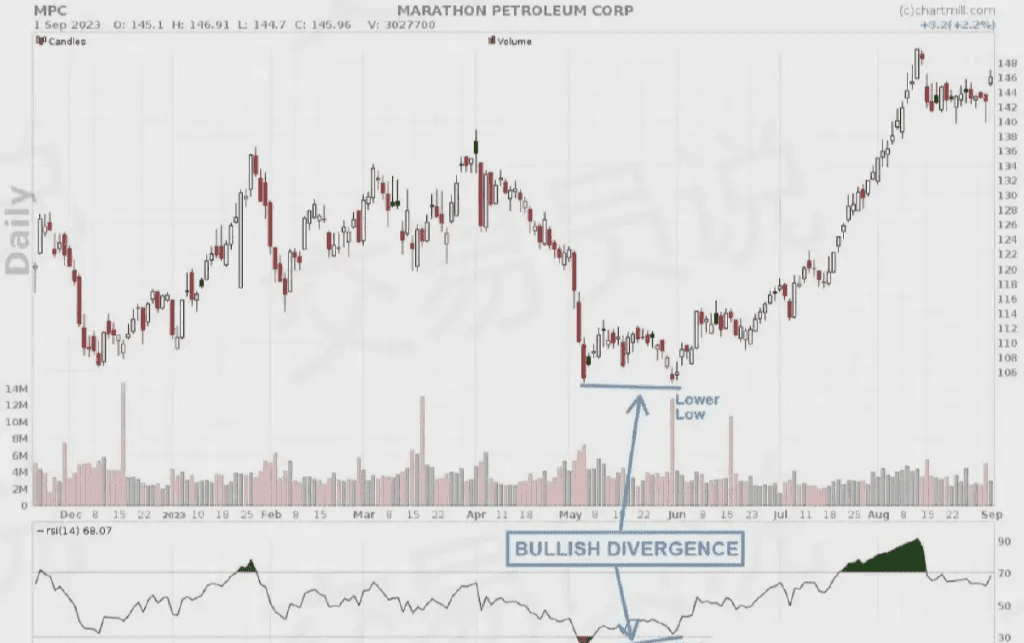
Bearish RSI Divergence
A bearish divergence occurs when the indicator shows a lower top while the price is still rising. This indicates that the strength and momentum of the rise are weakening (at least temporarily), and there may be a possibility of a (medium-term) price decline.
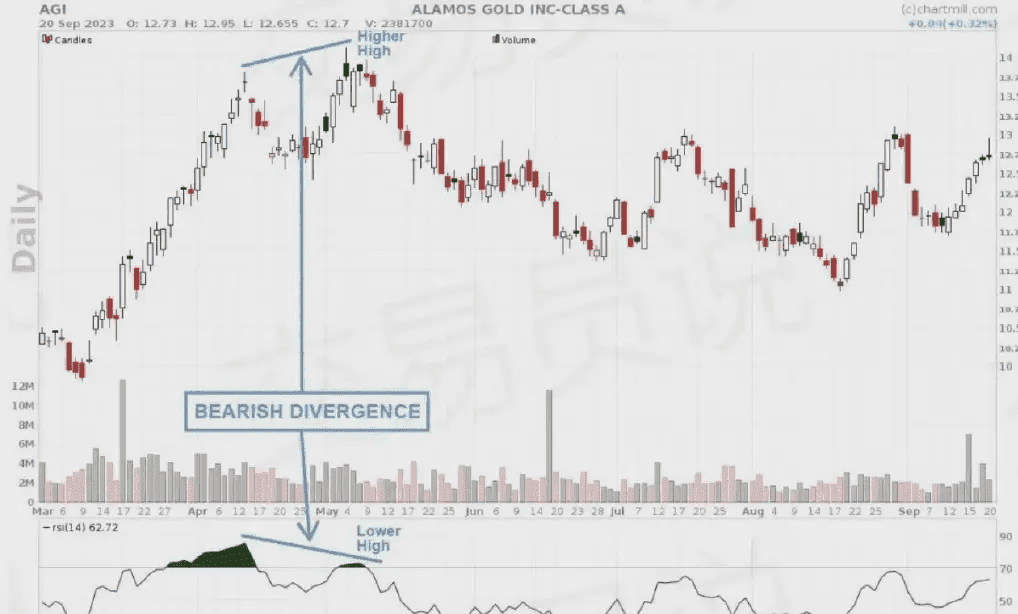
Hidden Divergence: Utilizing Temporary Price Changes in Existing Trends
This form of divergence is a derivative of classic divergence and mainly appears in stocks that show a clear upward or downward trend.
Hidden divergence appears when the price temporarily falls in an upward trend or temporarily rebounds in a downward trend.
Example 1: Hidden divergence in an upward trend
The figure below shows the chart of Evercore stock, which has been in an upward trend since the beginning of June 2023. The recent price decline caused the price to form new higher lows, but in terms of RSI, it formed lower lows, resulting in Bullish Hidden Divergences.
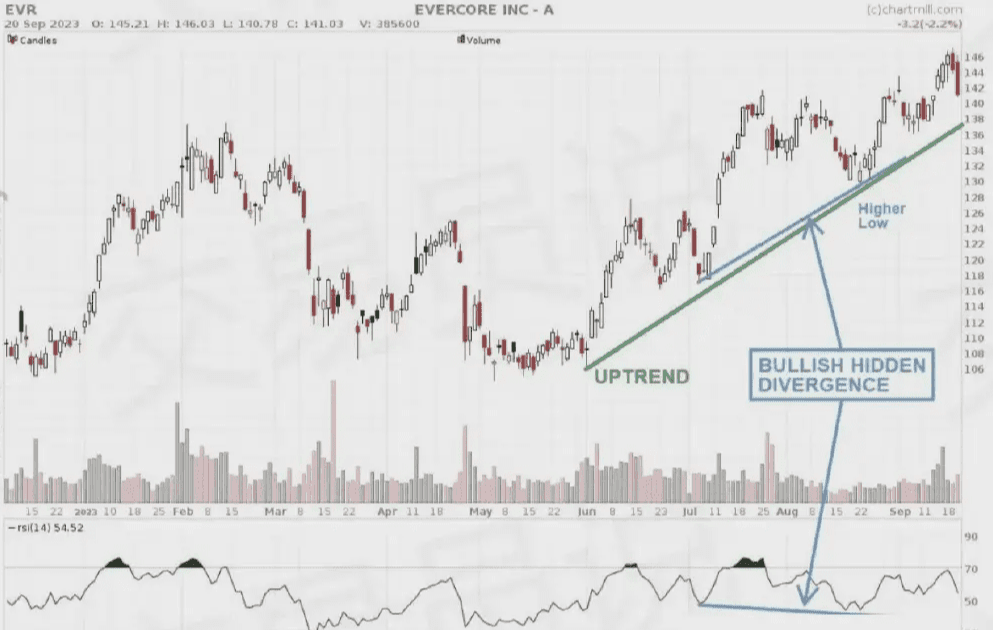
Example 2: Hidden divergence in a downward trend
Similar hidden divergence also appears in a downward trend. Chemours stock topped between July and August 2023, then the price fell and formed several consecutive lows. However, the lower high in the recent price formed a higher low in the indicator, which was identified as a Bearish Hidden Divergence.
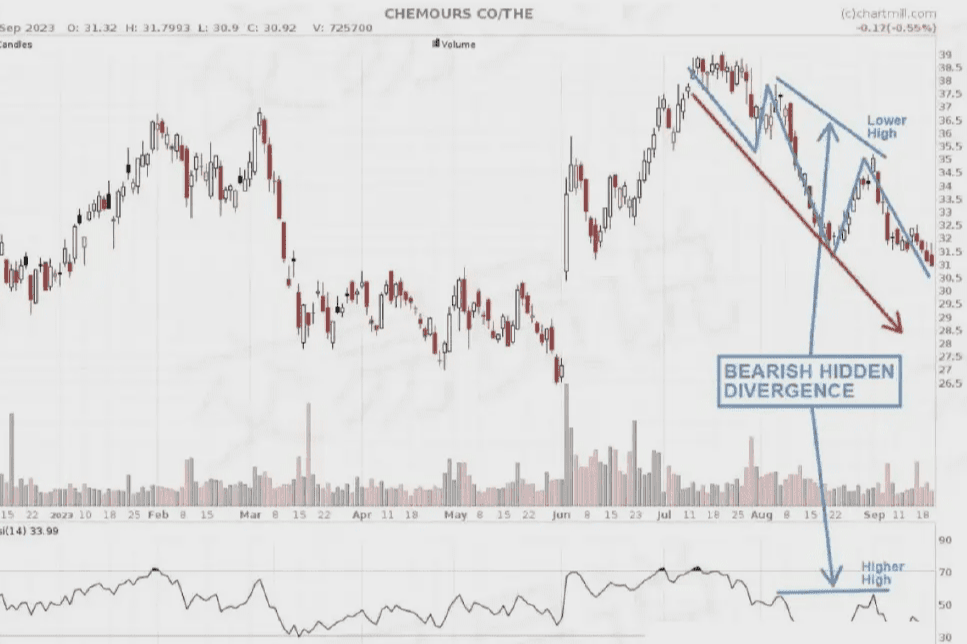
How to Use the RSI Indicator for Swing Trading
As we said at the beginning, the Relative Strength Index (RSI) is one of many technical indicators used by technical analysts to profit from short- to medium-term price fluctuations in the market.
After understanding the basic knowledge of RSI, next we will introduce in detail the different steps to successfully use the RSI indicator in swing trading strategies.
1. Choose the right time frame
A typical swing trading strategy will hold positions for several days to several weeks, so the positions will also be held overnight.
The default setting for swing trading is 14 periods on the daily chart, which corresponds to a 14-day time frame.
Shorter time periods generate more signals, but the margin of error also increases. When using longer periods, you may miss some price fluctuations.
2. Determine the Current Trend
The probability of success is greatest when trading along the main trend. For example, you can use the 200-day moving average to determine the long-term trend. For long positions, only choose those stocks whose long-term average line shows an upward trend and the price is above the average line.
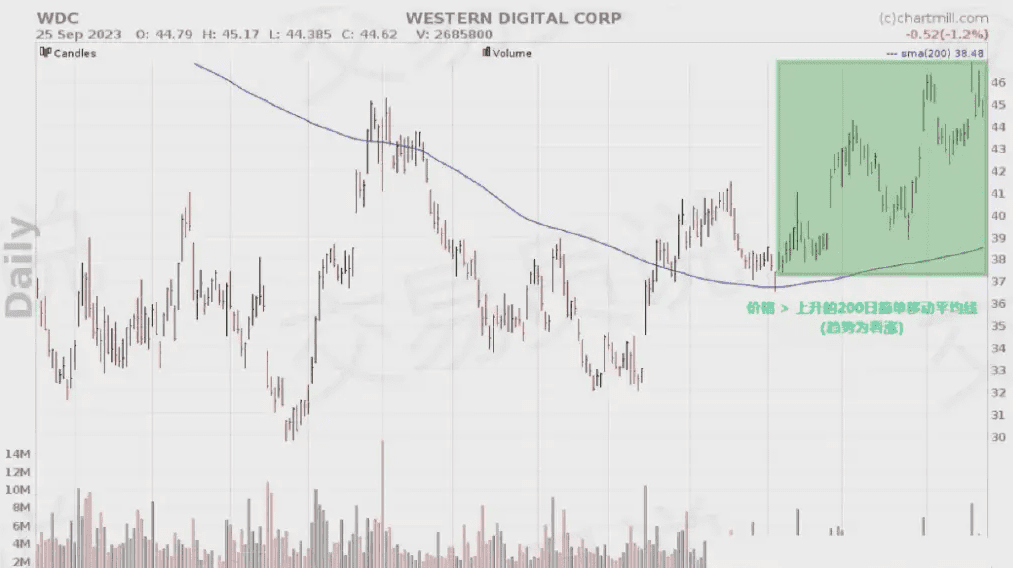
Another purely visual method to determine the current trend is to use an upward trend line (at least three connection points are required).
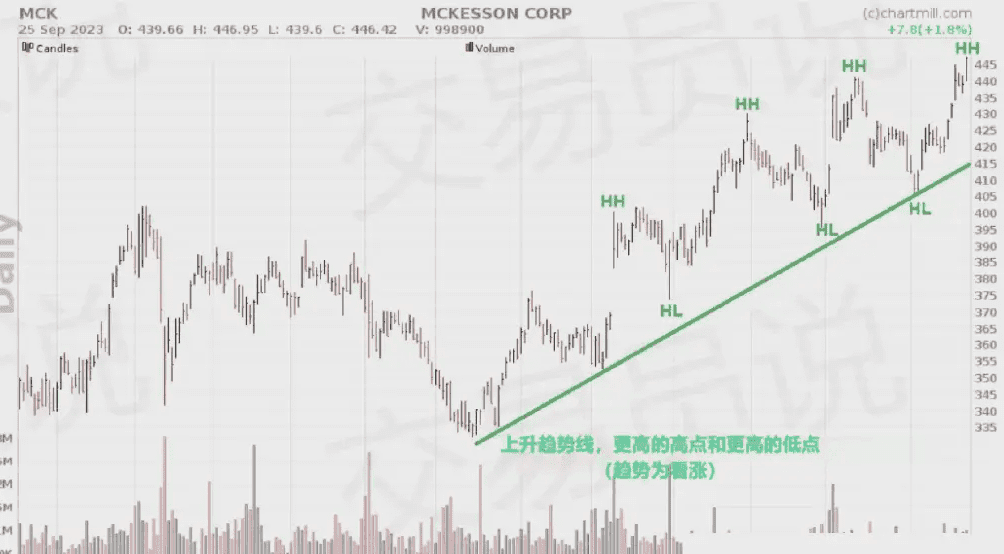
3. Determine (and optimize) RSI signals
As we also introduced above, usually, the 70 and 30 values of the RSI indicator are used to identify overbought and oversold assets, respectively, and these levels may indicate potential trend changes.
However, don't be too rigid about these levels; many factors depend on the momentum and strength of the existing trend. For example, in a strong upward market, a temporary reversal of the price does not always lead to the RSI falling below the 30 level.
Similarly, in a strong downward market, a temporary rebound in the price does not necessarily mean that the RSI will rise above the 70 level.
In the above situation, a valid buy or sell signal may have been triggered when the RSI value rebounded from the 50 level.
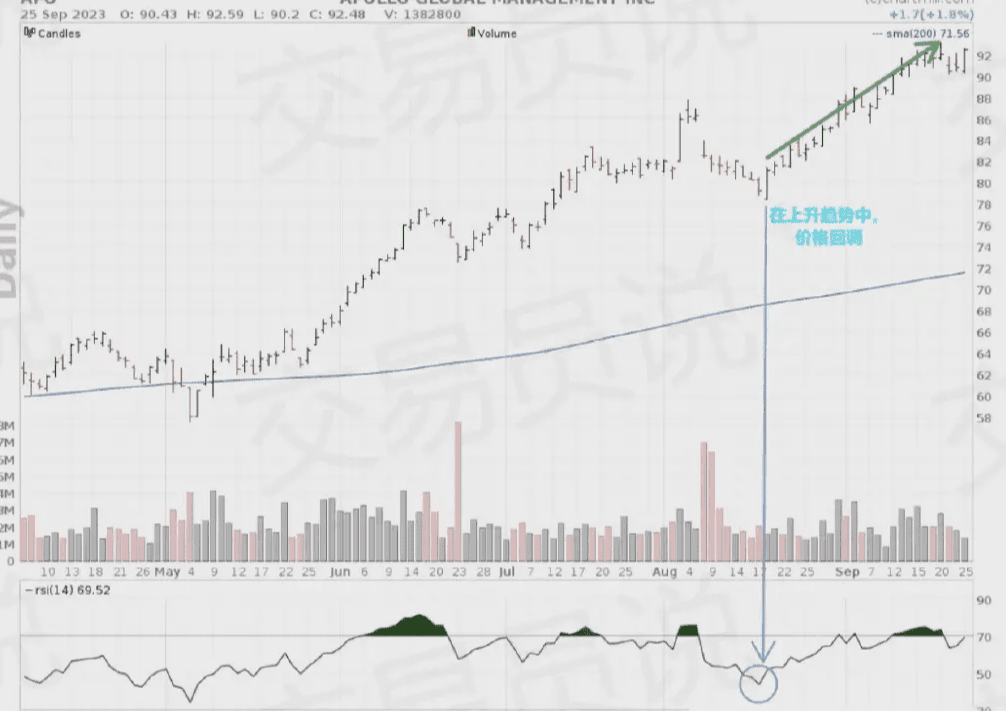
4. Do not rely solely on indicators
Technical analysis and its indicators do not guarantee trading success. Trading purely based on this indicator or any other indicator is the fastest way to lose money quickly!
As mentioned above, you should only trade in the direction of the long-term trend. After all, this will help you avoid many false signals.
In addition, always pay attention to price action. Chart patterns, candlestick patterns, and support and resistance levels that appear simultaneously with indicator signals are important confirmation signals that can significantly improve the reliability of trading setups. Remember, the number of signals is not important, quality is key.
5. RSI Divergence
In the above, we have learned about the types of divergence and their meanings. Hidden divergence is especially important when looking for entry points in strong trends.
Hidden divergence is a derivative of classic divergence and mainly appears in stocks that show a clear upward or downward trend.
Hidden divergence appears when the price temporarily retraces in an upward trend or temporarily rebounds in a downward trend.
6. Accurately Determine Entry and Stop Loss Points
Develop a trading plan and execute trades according to the plan!
Determine the entry point and stop loss point in advance according to your strategy. This ensures that you can accurately determine and limit risks. After all, protecting account funds is the primary task of every trader.
The exit point can be a pre-determined fixed price level, but another option is to use a trailing stop to profit from the trend for as long as possible and protect a larger portion of the accumulated profits as the price moves further in a favorable direction.
7. Position Size and Risk Management
Just as important as the trading setup itself is how you determine position size and its associated risk (related to the set stop loss).
Only those traders who can properly manage losing positions and ensure that losses remain small can remain successful in the long run. Five consecutive losses of 1% of the overall capital is not a disaster. However, several open positions that individually cause the portfolio to lose tens of percentage points are disastrous!
Frequently Asked Questions
1. What is the difference between RSI and Relative Strength?
"RSI" and "Relative Strength" are sometimes confused because they both contain the term "Relative Strength". However, they refer to completely different concepts:
● Relative Strength Index (RSI): A technical indicator used to measure the strength and momentum of price movements of financial instruments. It is an oscillator with a range between 0 and 100. By comparing the magnitude of recent gains and losses over a certain period (usually 14 days), RSI helps traders identify overbought and oversold market conditions, potential trend reversals, and divergences between price and momentum.
● Relative Strength (in the field of investment): A tool to measure the performance of one investment or asset class relative to another. It is used for portfolio management and asset allocation, so it is not an indicator like RSI. Relative strength can be calculated by dividing the performance of one asset class (or investment) by the performance of another asset, and is used to determine which assets are stronger (outperforming) or weaker (underperforming) relative to a benchmark or another asset.
2. What is the difference between RSI and Stochastic-RSI?
Stochastic-RSI is a momentum indicator, like the ordinary Stochastic indicator, mainly used to identify overbought or oversold levels. Adding the word 'RSI' means that Stochastic-RSI is a derivative of the ordinary RSI indicator. The difference from the ordinary Stochastic indicator is that Stochastic-RSI relies on RSI values, not the price of the underlying asset.
However, the formula used to calculate the values remains unchanged.
3. Is RSI a good indicator?
The Relative Strength Index is a valuable tool in technical analysis, but traders and investors should be aware of its limitations.
For example, it is often used to identify overbought (above 70) and oversold (below 30) conditions. However, these levels do not provide certainty. In fact, the market may persist in extreme conditions for a long time, and relying solely on RSI as entry and exit points may lead to (and often will) generate false signals.
The same applies to so-called divergence signals (when RSI and price move in opposite directions). This is a signal pointing to a potential reversal, but it is not always reliable. This divergence may also last for quite a long time, leading to missed trading opportunities or premature entry.
In addition, its effectiveness will vary depending on the selected period (usually 14 days). Shortening the period will make the indicator more sensitive, but may generate more false signals; while lengthening the period will reduce sensitivity, but may lead to signal delays.
This does not mean that RSI signals are not valuable when combined with other technical or fundamental information.
4. Can RSI be used for intraday trading?
Yes, it is very popular among day traders. It is a versatile technical indicator that can be applied to various time frames, including intraday charts, making it suitable for intraday trading strategies.
Intraday traders can adjust the cycle according to their trading style and trading assets. Shorter cycles (such as 9 or 5) are more sensitive and suitable for ultra-short-term trading; while longer cycles (such as 14 or 21) are more suitable for slightly longer intraday trading.
Strong recovery, doubling assets! Follow Weiwei closely, arrange in advance, and easily reap huge profits
The market is never short of opportunities, the question is whether you can seize them. Follow experienced people, follow the right people, and we can earn more! There are still places in the team, come quickly
SUI TURMP BONK PEPE OM SOL PNUT NEIRO
#比特币市值超越亚马逊 #加密总市值创历史新高 #BTC重返12万 #Strategy增持比特币 #特朗普允许401(k)投资加密货币